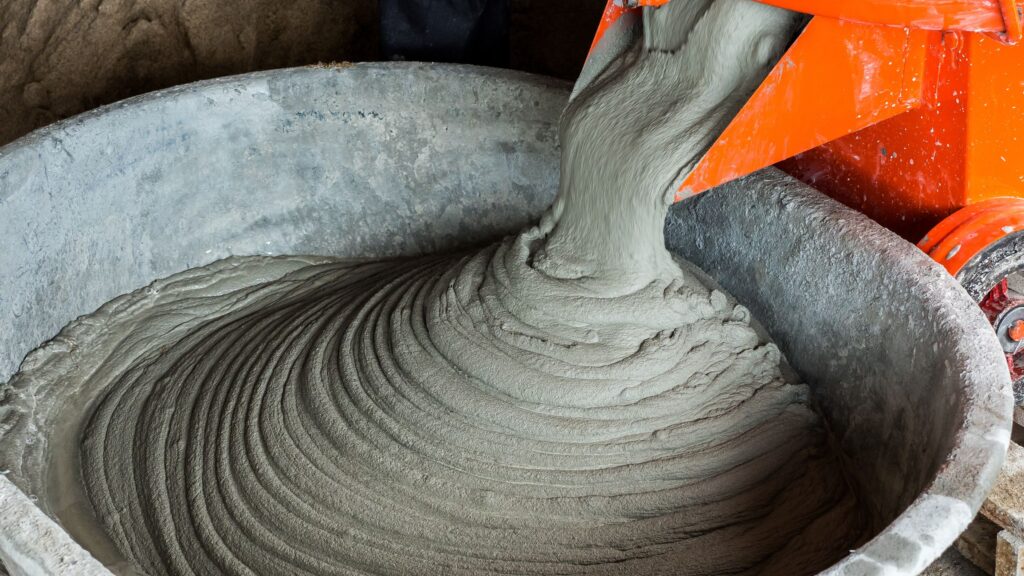Concrete, often hailed as the cornerstone of modern construction, holds a pivotal role in building
various structures. It serves as a binding agent that sets, hardens, and forms the very core of
many construction projects. Workability, a crucial property of concrete, refers to its ease of
placement during the construction process. It’s a defining characteristic that can significantly
impact the overall efficiency and success of a construction project. In this article, we will delve
into the importance of concrete workability, why it matters to builders, and the four common
factors that influence it.

The Significance of Workability in Concrete
Concrete’s workability is a vital aspect of its performance, particularly in its fresh and raw state.
Builders and construction professionals worldwide prioritize concrete with excellent workability
because it directly affects their ability to mix, transport, place, and compact the material with
ease. Highly workable concrete simplifies the construction process, making it more efficient and
less labor-intensive. As a result, the demand for ready-mix concrete in Surrey and other
construction hubs remains consistently high. Ready mix concrete is pre-mixed off-site according
to precise client specifications and delivered directly to the construction site. This method not
only saves valuable time but also accelerates construction projects.
Factors Influencing Concrete Workability
Cement Content:
Cement is a central element in the world of concrete mixtures, holding the power to significantly
influence workability. When we talk about increasing the cement content in the mix, we’re
essentially opening the door to smoother operations within the concrete. This excess cement
paste acts like a well-oiled machine, coating our aggregates efficiently, and in the process,
reducing friction between them. Picture it as a dance – the aggregates glide effortlessly during
mixing, transportation, placement, and compaction. Those who’ve mastered this craft, the
experienced suppliers, are the choreographers of concrete, knowing exactly how to strike the
right balance in the water-cement ratio to keep the performance smooth and seamless.
Water Content:
Now, let’s talk about water – the other critical player in our concrete mix. Its role is just as vital
as cement. Imagine it as the conductor of this symphony. To achieve the perfect harmony, we
aim for a water-cement ratio that falls between 0.45 and 0.6. This is the sweet spot for good
workability. The secret sauce here is to keep things simple – no fancy additives. It’s like
preparing your favorite recipe with just the essential ingredients. However, there are times when
we need to turn up the volume – manual mixing, for instance. In such cases, a bit more water
can be added to make things flow smoothly. More water amps up the mix’s workability, making it
a breeze to handle.
Mix Proportions:
Mix proportions, our next performer, dictate the ratio of coarse and fine aggregates relative to
the amount of cement. Think of this as the orchestra conductor deciding which instruments take
the lead. Adjusting these proportions is like fine-tuning the harmony. When we add more
cement, we’re enriching the ensemble and giving the aggregates a slicker tune to follow. It’s all
about promoting that smooth flow. But sometimes, we need to tone things down. Reducing the
cement content limits the paste available for the aggregates, creating a more constrained
performance.
Aggregate Size:
Last but not least, let’s talk about the size of our aggregates. This factor directly influences
surface area, which is like the stage where our concrete mix performs. Larger aggregates shrink
that stage, while smaller ones expand it. When we have more surface area, it’s like having more
dancers on stage – they need more paste to make sure everyone’s in sync. This calls for a little
extra cement. And, of course, with more dancers, we need a conductor (water) to keep things
moving smoothly.
Conclusion
Concrete’s workability is a fundamental aspect of construction that should never be
underestimated. Its influence on the ease of mixing, placement, and overall project efficiency is
undeniable. Builders and construction professionals worldwide recognize the value of concrete
with excellent workability, as it simplifies the construction process, reduces labor demands, and
accelerates project timelines.
Understanding the key factors that impact workability, such as cement content, water content,
mix proportions, and aggregate size, is crucial for achieving desired results in construction
projects. By carefully managing these variables, construction teams can optimize workability,
ensuring that concrete flows smoothly and efficiently during every phase of the project.
As you embark on your construction endeavors, remember that concrete workability is not just a
technical detail but a cornerstone of efficient, successful, and cost-effective construction. By
partnering with experienced suppliers and adhering to sound concrete practices, you can
enhance workability, streamline your construction processes, and ultimately achieve exceptional
results in your projects.







